Christmas Chick hatched!
This little bundle of fluff appeared in the incubator about 5 days early. The others are waiting until the 29th or beyond to hatch. Looking at the wing feathers, the internet and taking a chance, it’s a hen. Eitherway it’s pretty comfortable around me and Pixie, a wee dog we’re baby sitting. Pixie has a mixture of maternal instincts and licks her lips. “ohh sweet a baby. mmmm smells like chicken”

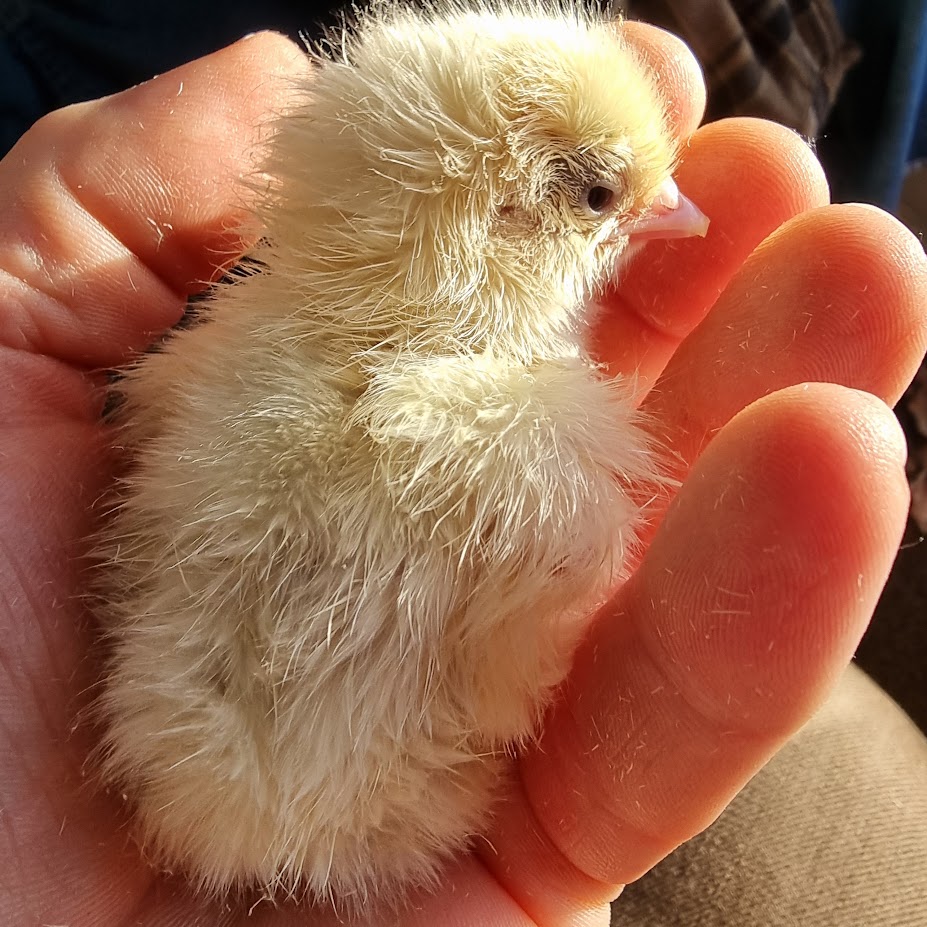
These are chirstmas brussels sprouts made by a class at Carron Primary School. I’m delighted and they are our focal point this year. More photos and video on my instagram feed.

It’s almost Christmas
Making salts is proving interesting, tasty and creative. They are brilliant christmas gifts and next year I’ll go into production and sell them. With the postal strikes, I’m pleased I did not start them this year.
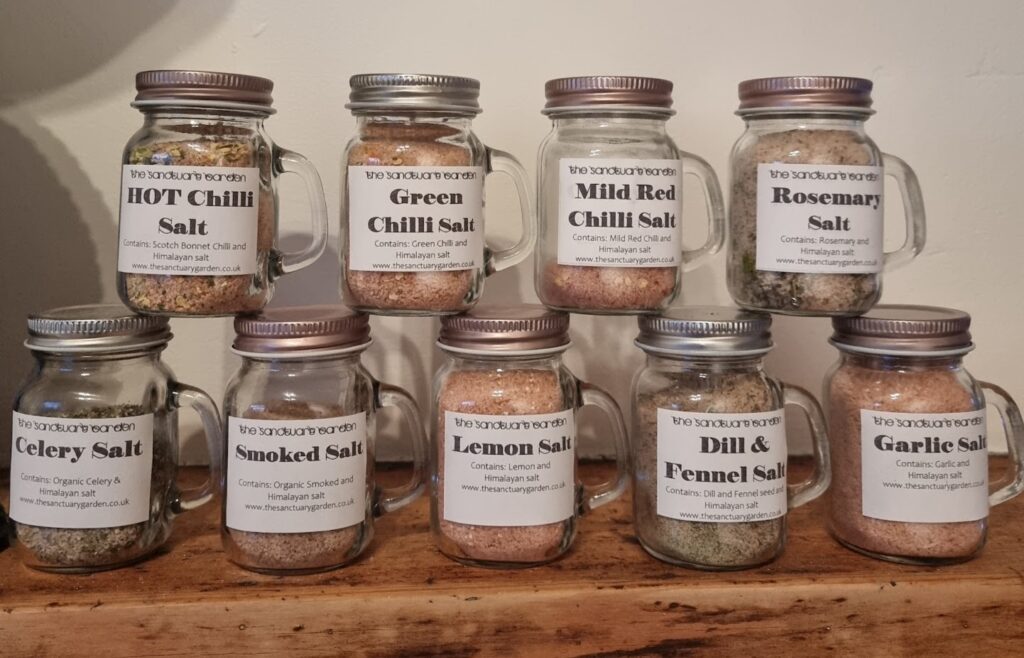
The garden has slowed to a standstill and the forecast is looking cold for the next month or so. No much is happening in the poly tunnels either.


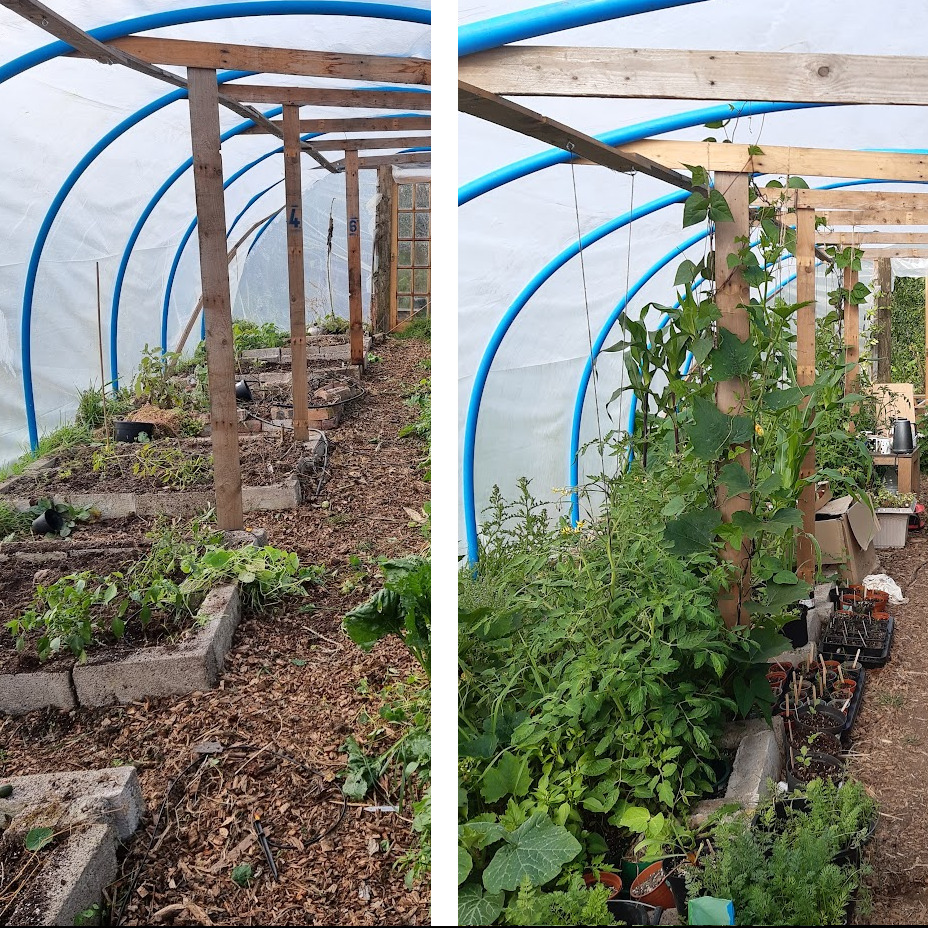
The hens that were munched by a neighbour’s dog have been replaced as has their accomodation. The dog has been back and the tractors have kept the hens safe. Phew.

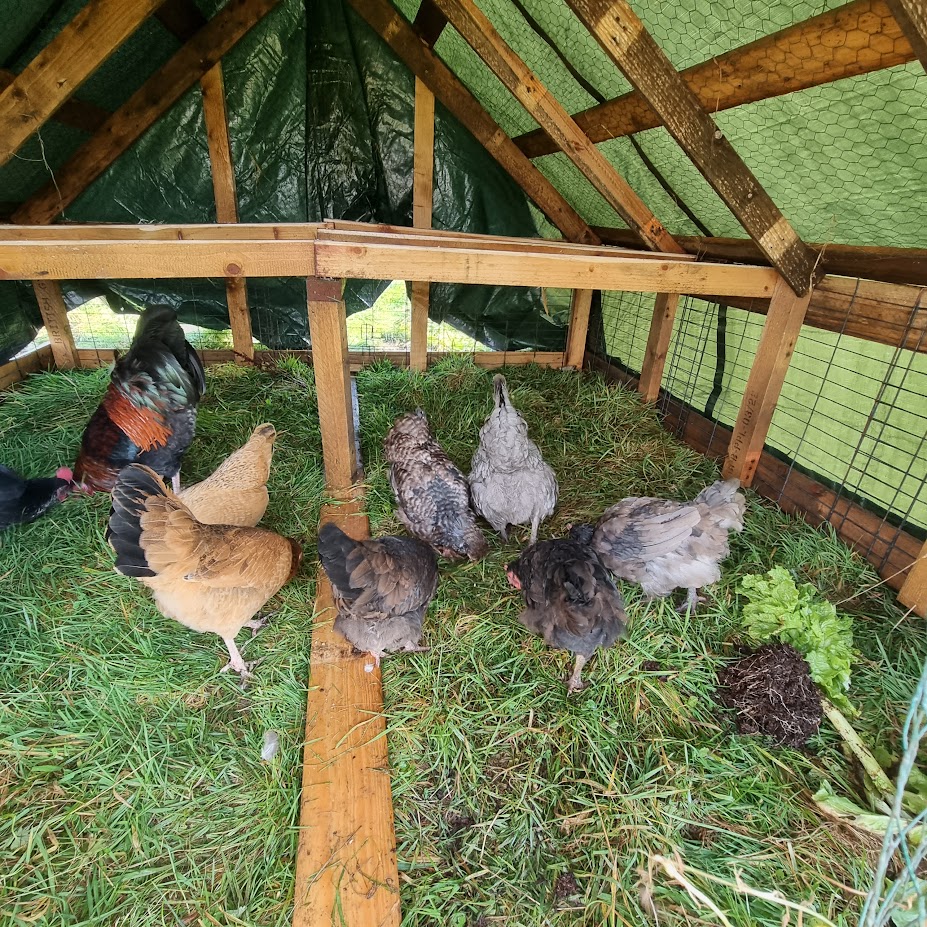
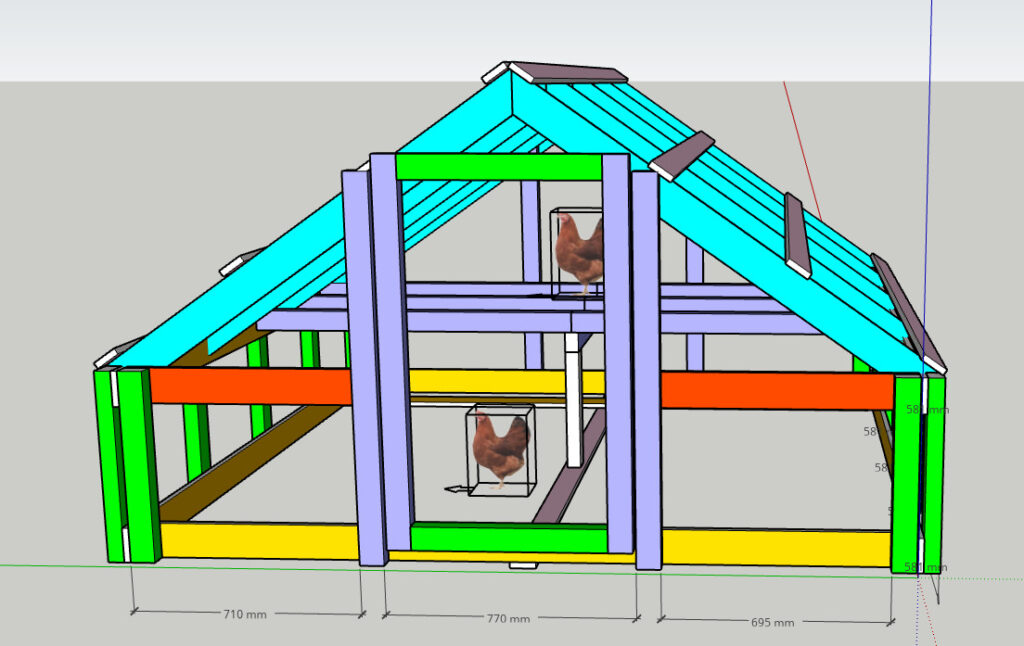
Grow West Fife and DandelionScot

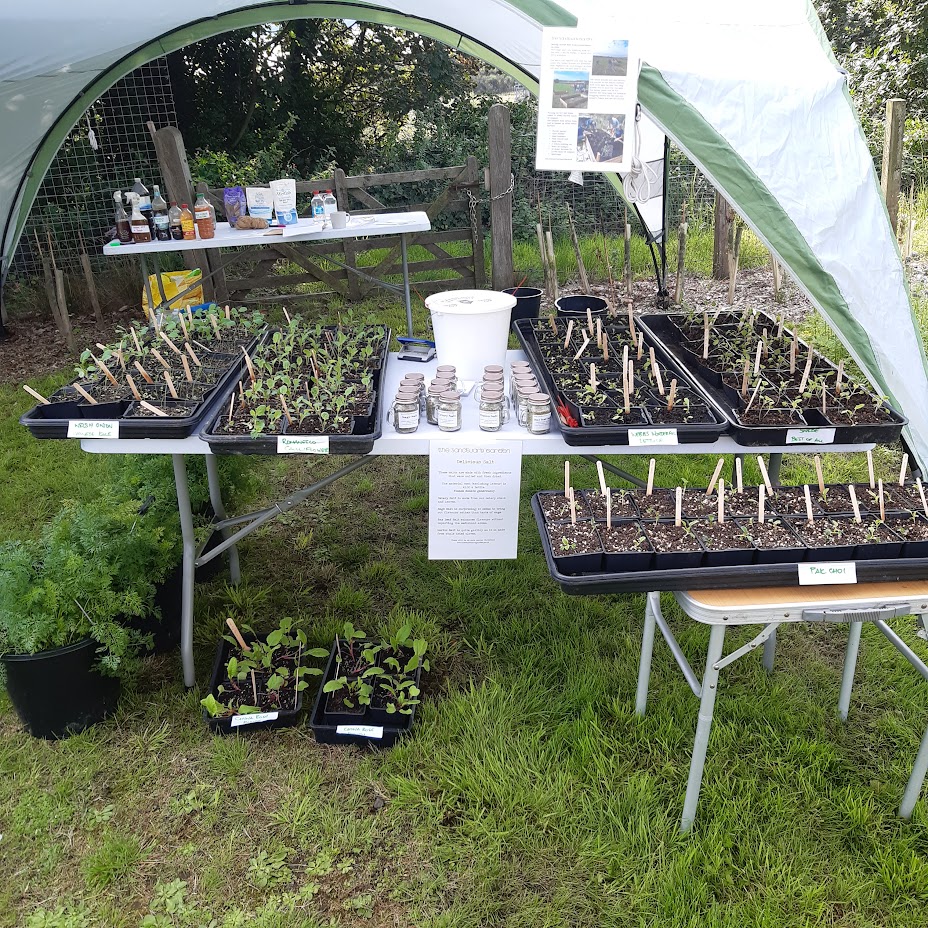

Dandelion Scot at Blair Castle on Sunday was a great event hosted by Grow West Fife; freshly made pizza, ice cream, cakes and scones, story tellers, cyanotype prints and kids made plant prints using material and a hammer and they pulled and ate all the carrots from the five buckets. The handmade salts, half the seedlings and little cards wih QR codes directing interested visitor to Eats’ Facebook page were scooped up by the visitors from the Eats/Sancturary Garden stand.
The rain held off until about 5:00pm and under cover, we were entertained by acoustic musicians until about 6.
It’s busy in the kitchen garden
There is a misconception that this time of year is spent just harvesting and not planting seeds “nothing grows in winter” I’ve heard many a time. The trouble is, I believed it until I tried planting lettuce and a few others over winter.
The benefits of planting now, is there are still a few growing months, where the seedlings get enough time to mature enough to stand the frosts and snow. They can be picked if needed or left until spring when they have a two month headstart. Early spring cabbage, lettuce and greens, all out in the open, without a poly tunnel or greenhouse.


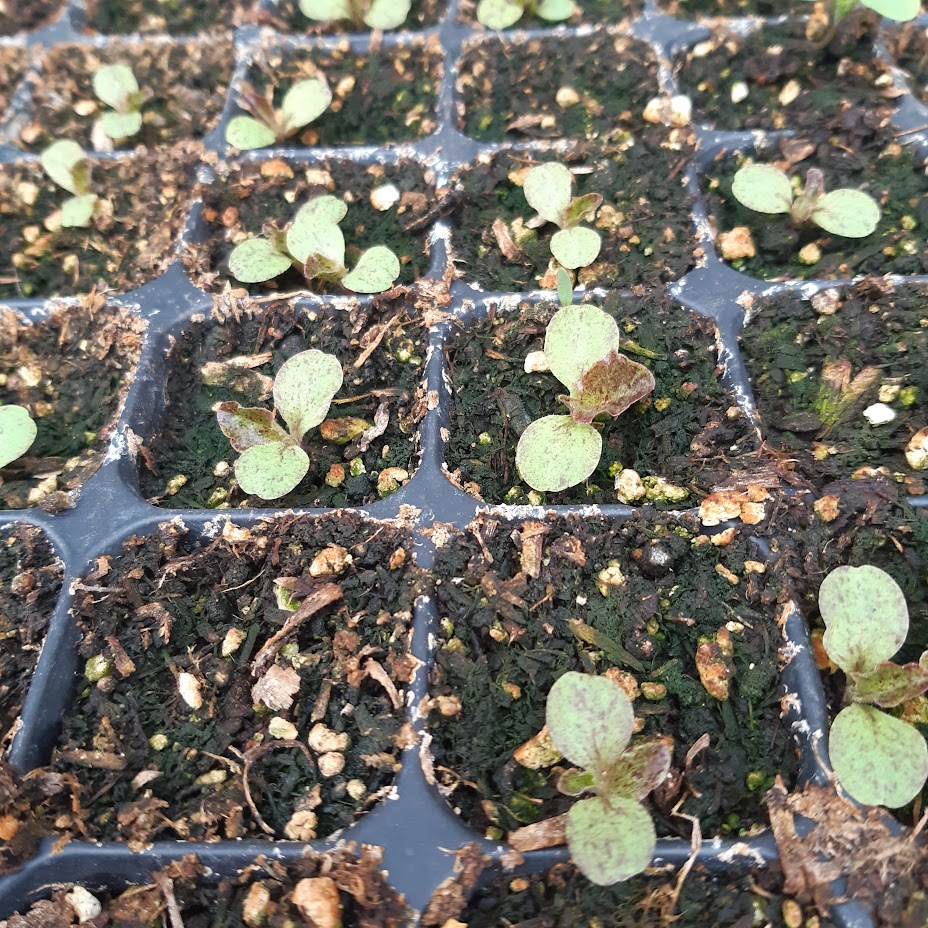
Harvesting is a joy and sometime takes a bit of organising to make the most of it as once harvested most vegetables deteriourate in quality. What can you do with a glut? Beans you can leave on the plant to ripen and used as dried beans. All the root veg like carrots and beetroot can be left in the ground or put in a clamp – basically buried in sand and protected from frost. Spinach can be blanched, sliced and frozen, it does not take up too much space. There are other options, pickling and fermenting, both pretty easy but you need bottles and space to store them. Dehydrating is another option, it is possible to make a DIY dehydrator with a lightbulb and some wire racks in a cardboard box, although it sounds like a fire hazard to me. You can alway make jams, chutneys, syrups and the like, the internet is filled with recipes. Prepper web sites are great for ideas.


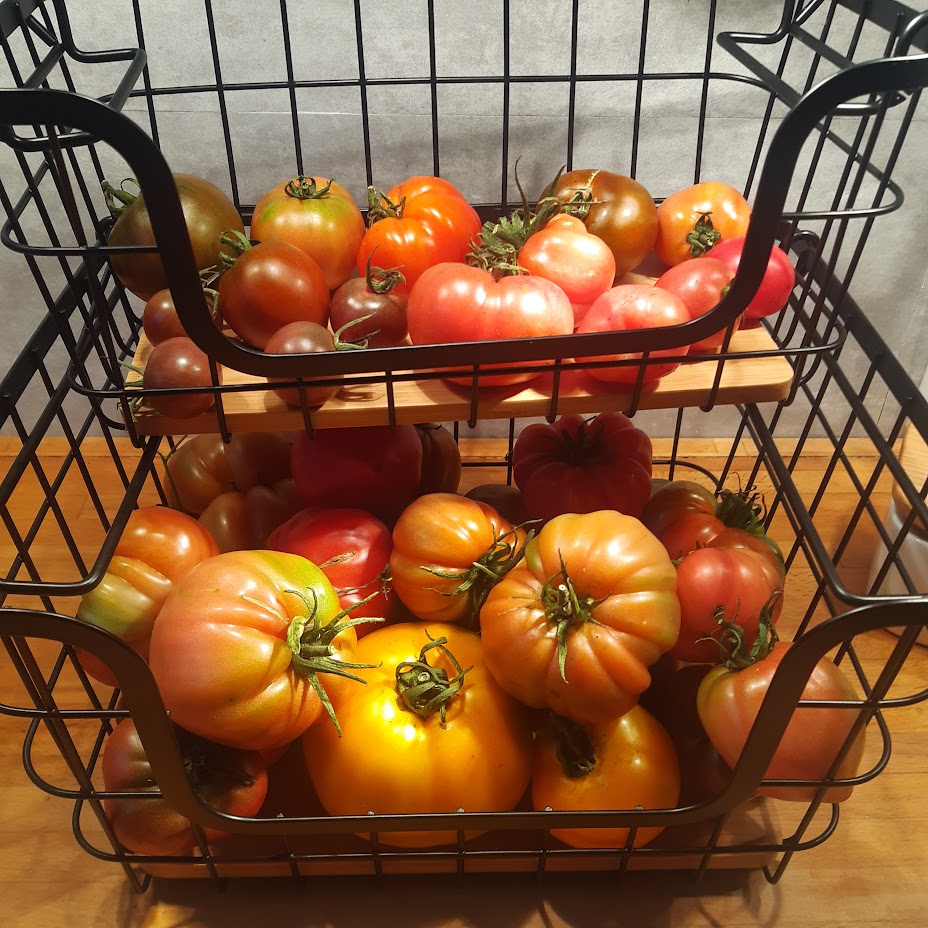
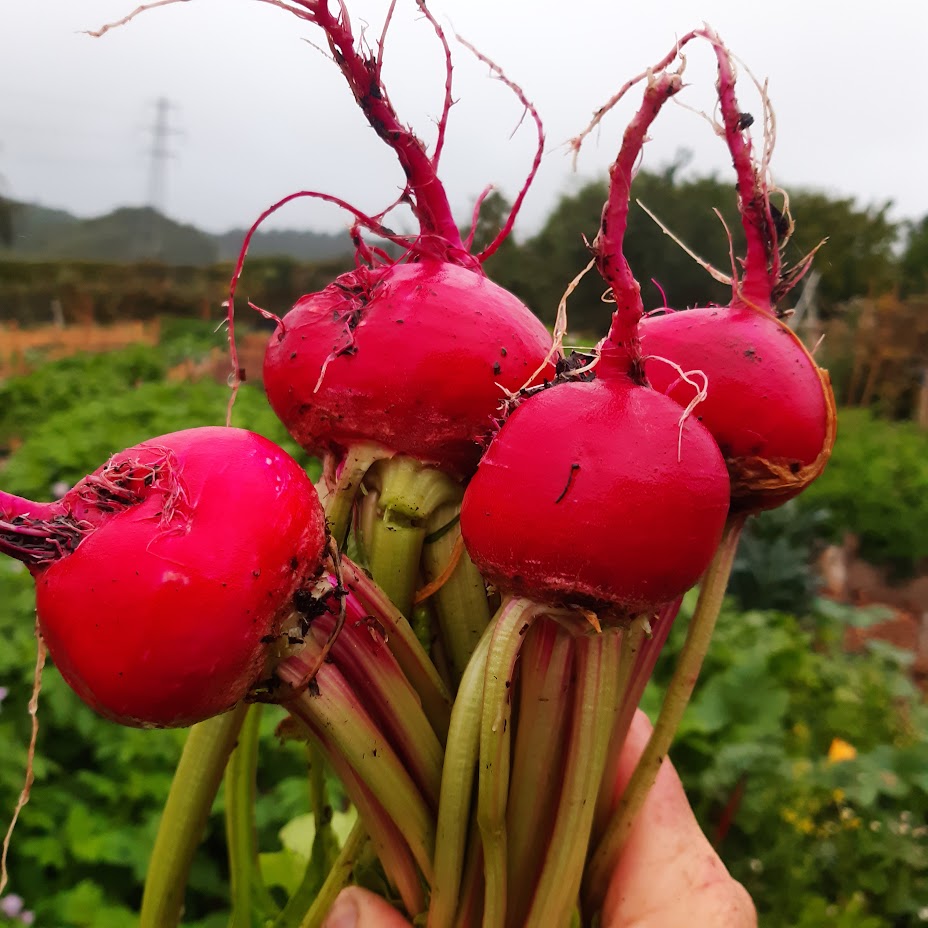
Are you planting seeds now?

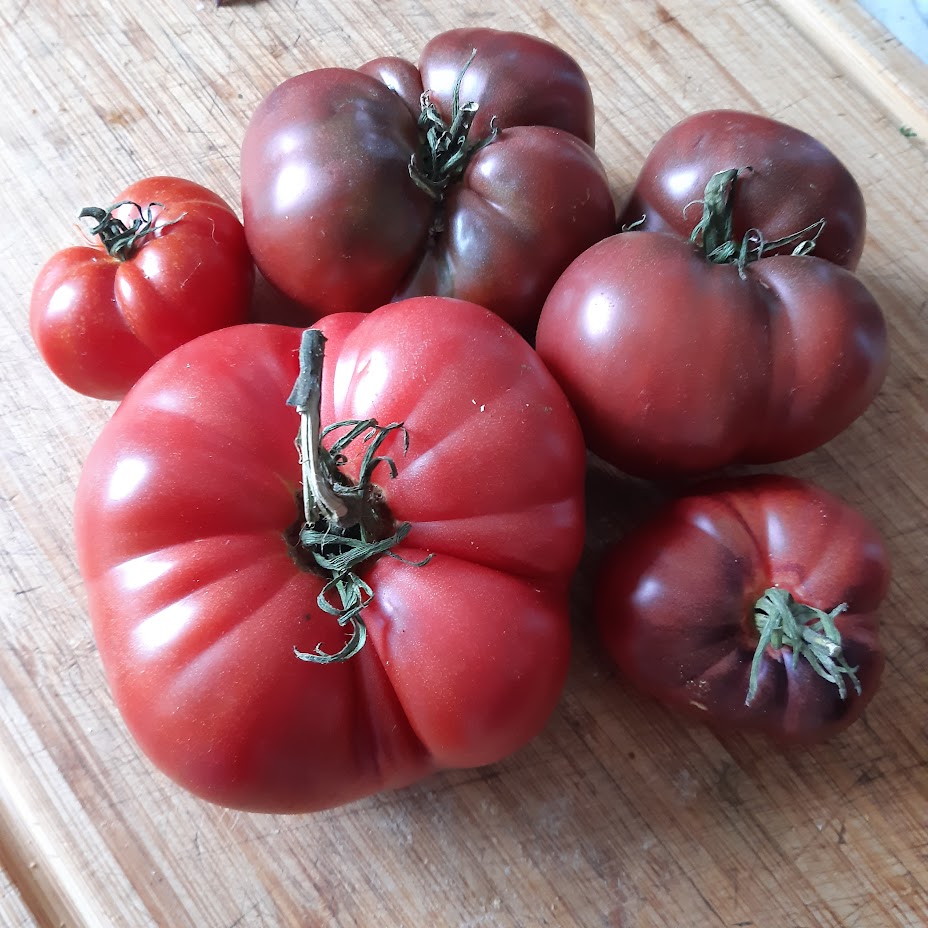


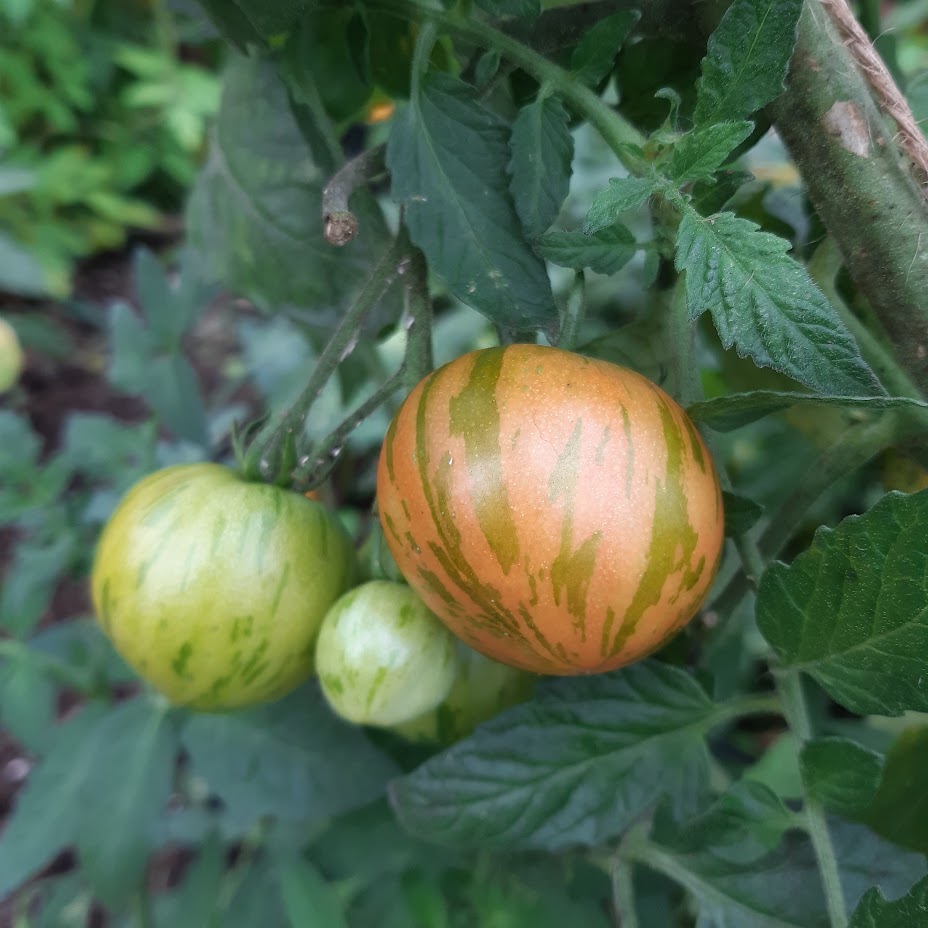
It is all happening. The potatoes, had they been planted at the right time would be ready for harvest; it will probably be another month. The peppers are the first I’ve ever grown. The Sunrise bumblebee tomatoes were gifted me from a grower in Canada. The fat red tomatoes were seeds from Galicia in Spain. Delicious and huge. The corn was not a success but when dry I’ll send the seed to a gardener in Iran.
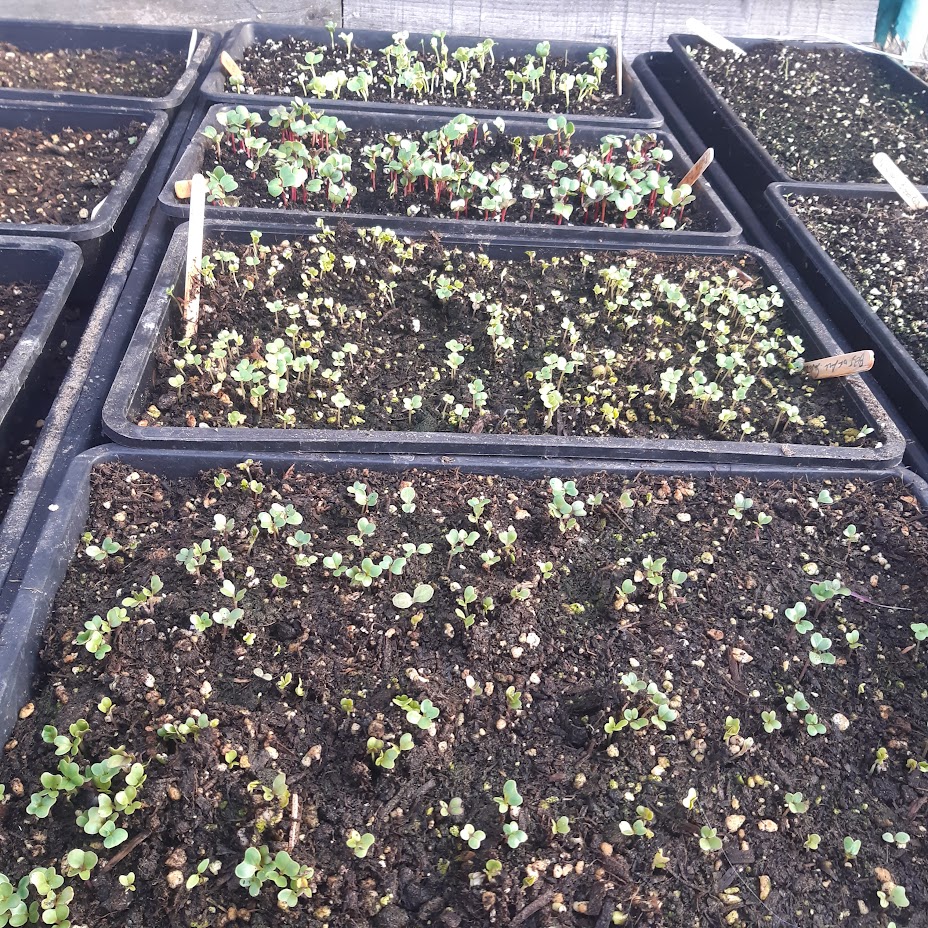
Now is the time to start planting seed for autumn and over wintering. The plants will have enough time to grow and then the cool weather will keep them in an outdoor fridge. There are loads of lettuce varieites that can be grown in Scotland.
Rats and rock (not wood) pigeons
As a general rule, I’m happy to promote wildlife and diversity however when the wildlife is either digging up and eating everything you plant or pooping on every surface in the shed, I have to draw the line.
The rats have moved in from the field now that has been harvested and seem to be proliferating.
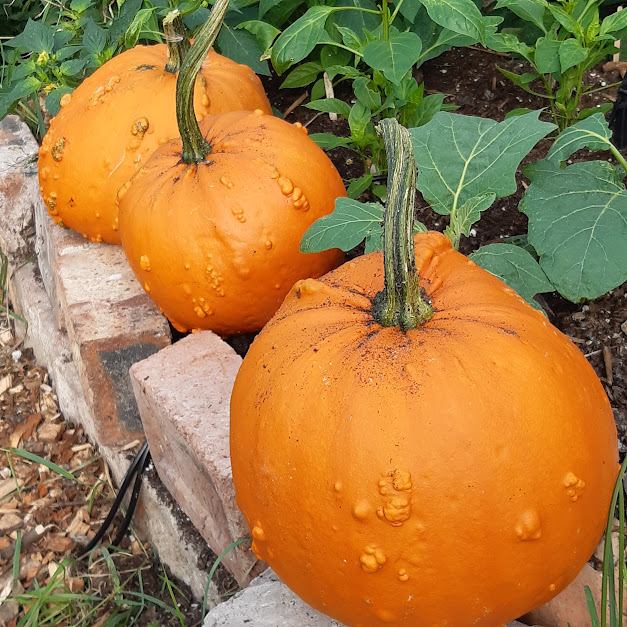
The pumpkin plant in my polytunnel suddenly wilted. “I’ve watered” I thought. The rats had dug it up and eaten the roots. The plant was not attached to the ground. All the beds now have holes in them and tomatoes are being nibbled. Not good.
The rats have also been eating seedlings, they particularly like lettuce and peas. They are clever little buggers and soon know how to eat the bait without setting off the trap and I’ve tried different shapes and sizes. Out of sheer necessity I’m using poison as I can’t plant any seeds without them raking through the seed trays for freshly germinated seeds.
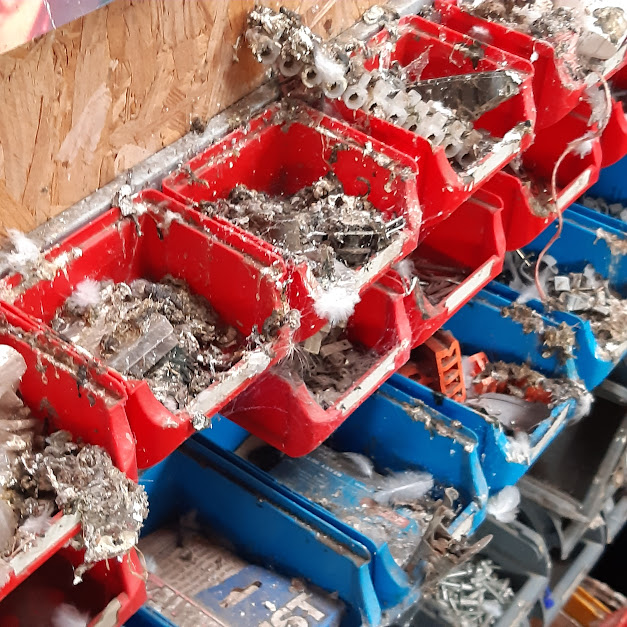
The rock pigeons, ala Trafalgar Square, are breeding like mad, the netting I’ve put up to keep them out of the eaves is now bulging with poop. the inside of my shed, particularly below trusses is coated with a layer. Thinning them out is more of a challenge however I’m going to spend time taking down the gutters and putting up wire mesh.
Generosity of Individuals
The generosity of individuals is not to be underestimated. It builds community and helps all involved. “How?” I hear you ask. It’s simple – community. We all really like helping others.
This is a perfect example.
Andy, the Site manager, Davie the telehandler driver, Fiona the Sales Agent at Barratt’s Kingslaw Gait have helped donate plasterboard pallets that are turned into raised beds.


Today these pallets were turned into raised beds. Ian and James, my neighbouring Farmers, lent me a huge trailer to collect two loads of pallets. These were disassembled, denailed and built by Aegon’s volunteers. Two beds were built, oiled and nailed and filled. One bed has Brunswick Cabbages – monsters when mature, and another filled with asparagus seedlings.
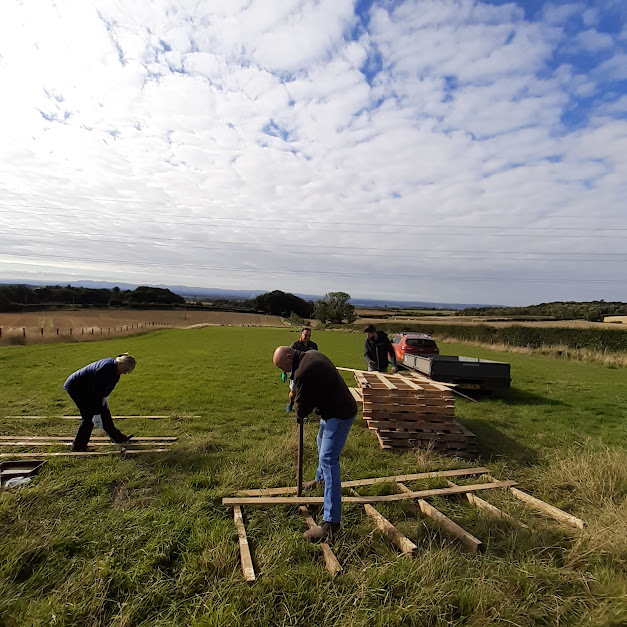
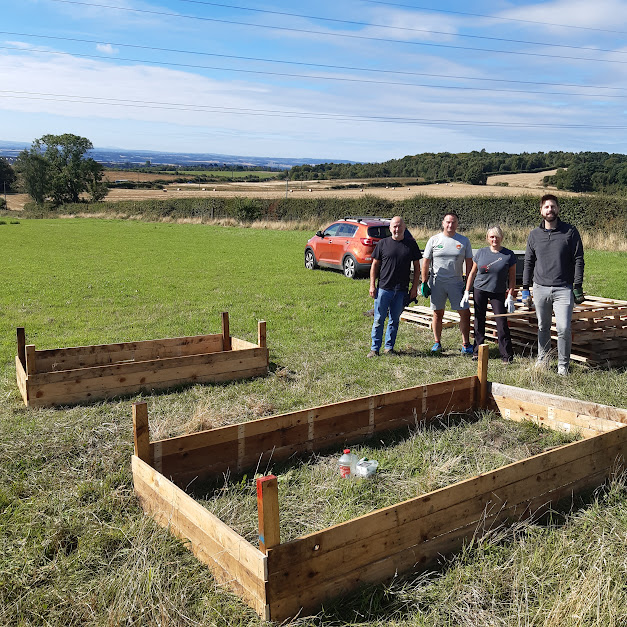
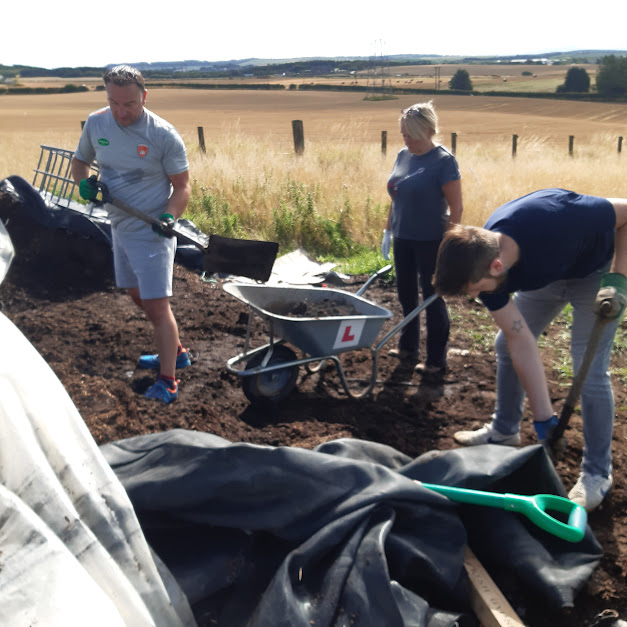
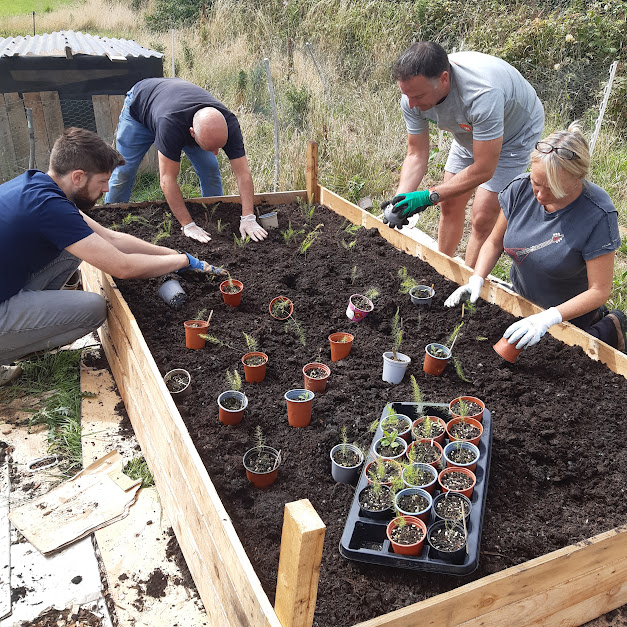
The team from Aegon left on a high, knowing that in three years there will be asparagus delivered to their offices and took home plums they picked and nutritious fresh veg and eggs for their families. Barratts, because they have done something to help the community, as well as enjoy some of our organic veg.
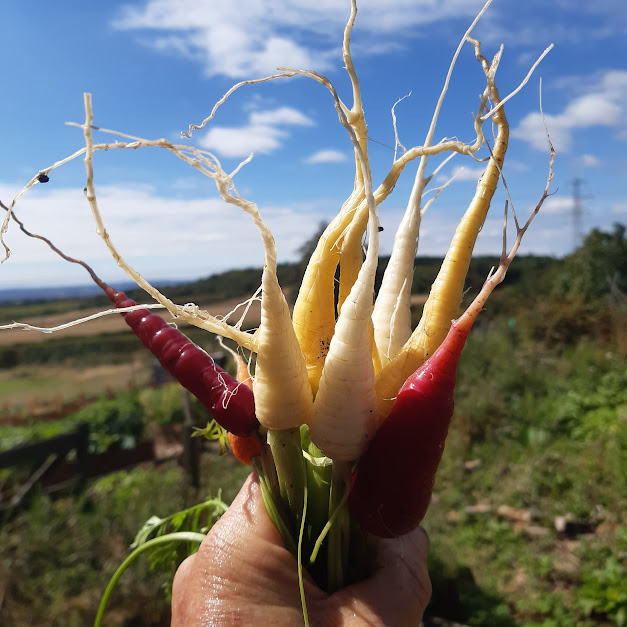
Ian and James are neighbours and generous so using a trailer was a no brainer.
Here is the most interesting thing, today was a real boost for me; I struggle with depression. The beds that have been made will provide food for local families decades.
There are different sized pallets, and the smaller pallets will be used to make raised beds for nursery schools, families who need them, people who struggle and anyone with an interesting story. The Sanctuary Garden provides the raised bed, the compost and seedlings so the chances of success are high. The feedback from the few donated this year has been incredibly positive. Not because it’s cheaper than the supermarket, but because it makes individuals feel better mentally and physically.
Barratts for pallets, farmers for the trailer, donations to buy compost, a few volunteers and a little work from me.
Thank you all.
It’s busy in the kitchen
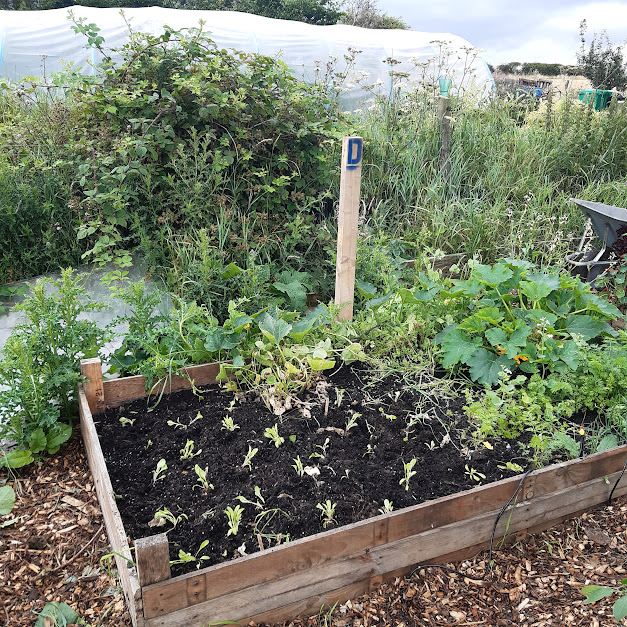
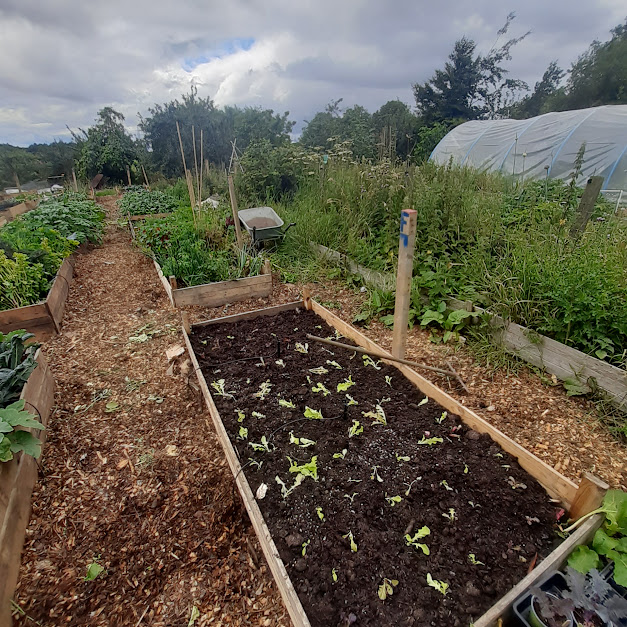
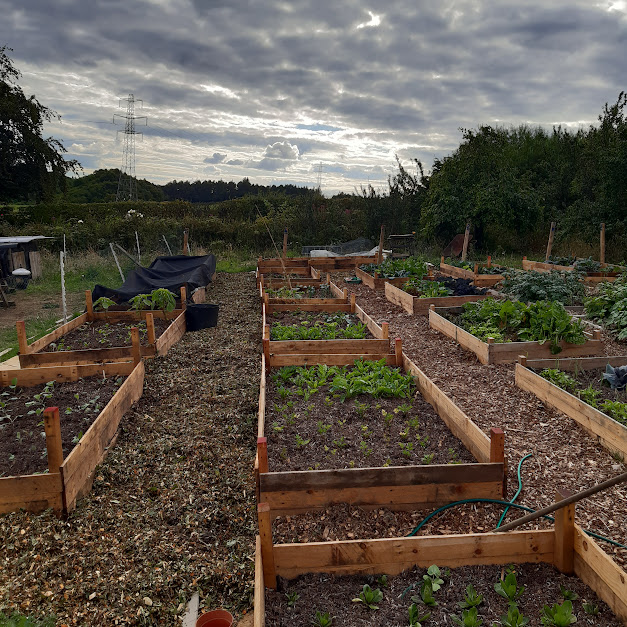
As vegetables come out, new ones go in. It’s really important to keep the microbes fed by live roots.
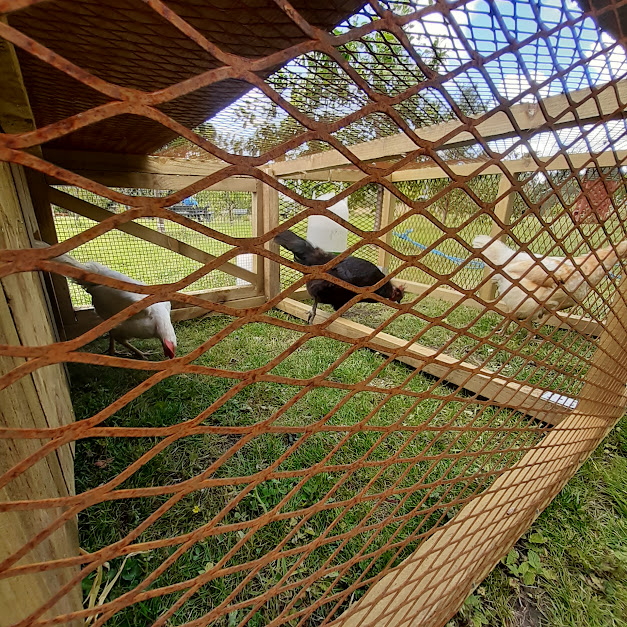
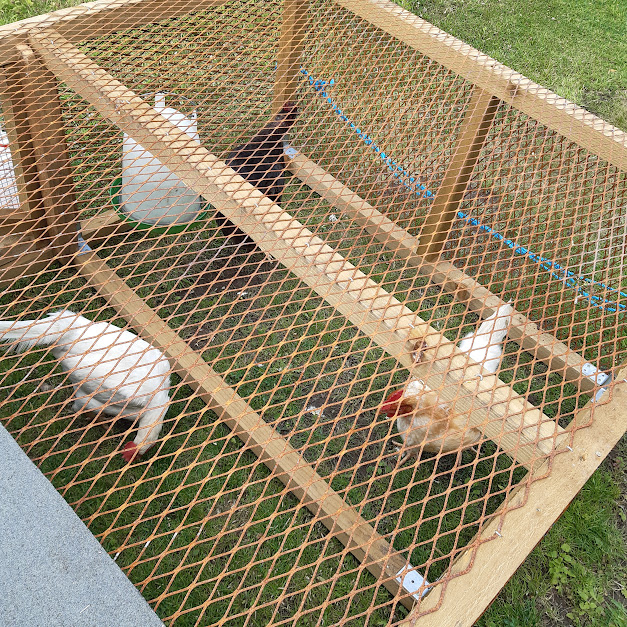
Three of the hens have been donated to Eats Rosyth’s hen run made by the Men’s shed. The white hen was selected because she could get out and dig up my veg. The others were at the bottom of the pecking order so may have an easier life here. They will be spoiled rotten.
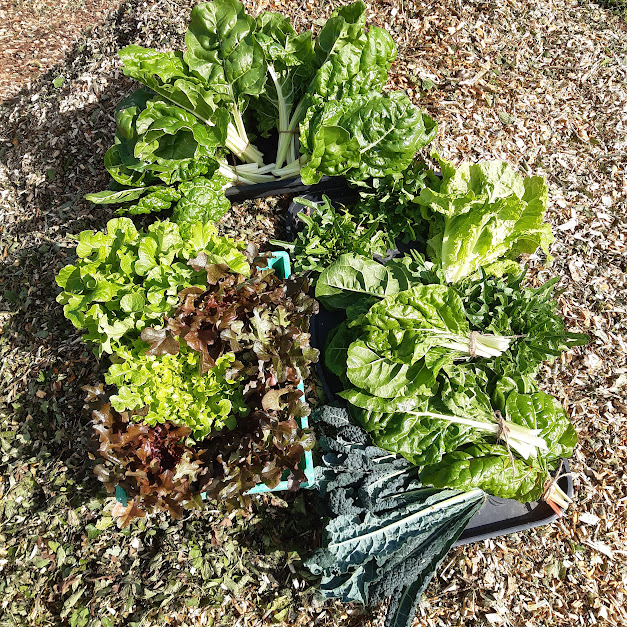
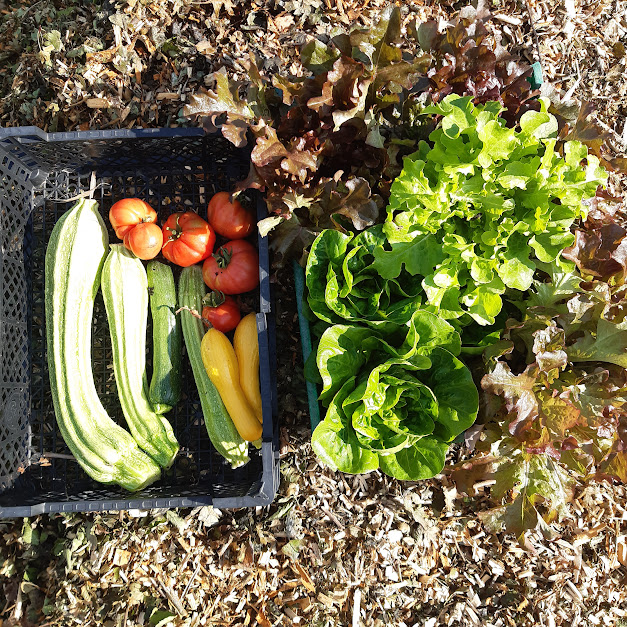
More veg donated. The tomatoes are nothing short of delicious; agreement seems unanimous.
A little less conversation, a little more action!

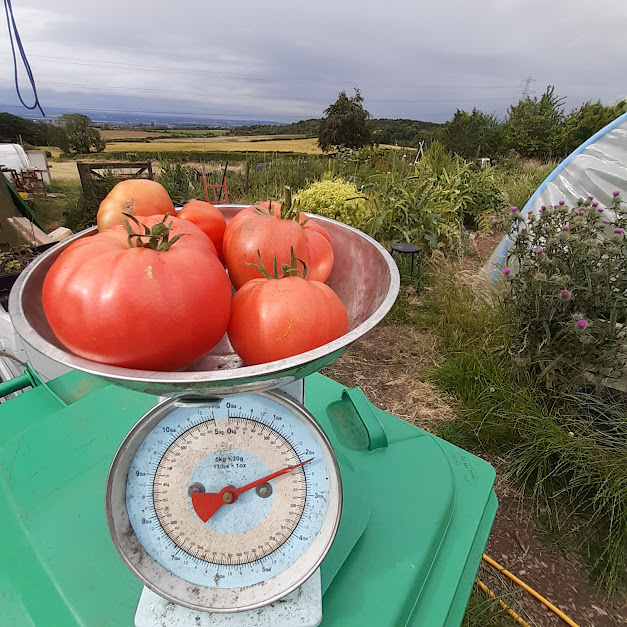
The tomatoes are nothing short of delicious. Really delicious. They taste like they have been slightly seasoned. The lettuce is one of the few where I’ve not harvested a few leaves so it’s almost perfect and huge – it’s in a 12″ seed tray
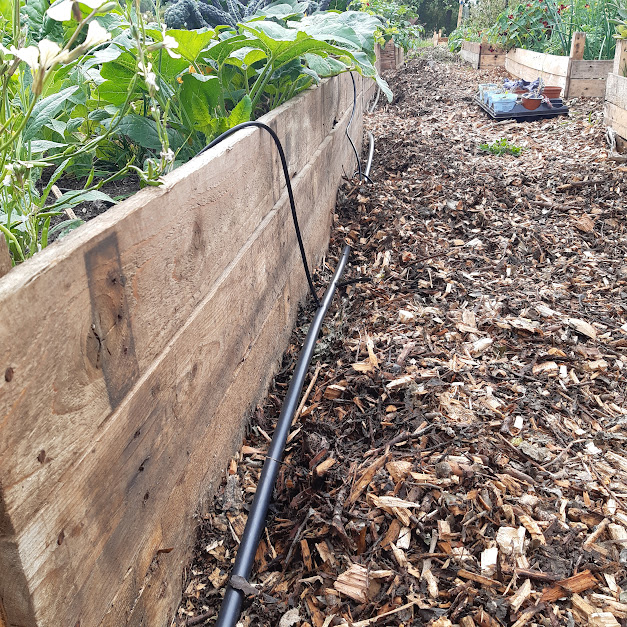
A 13/16mm LDPE pipe runs the length of the five beds and have two 4mm pipe T’d off that lead to spray heads on stakes. Sounds medieval…
The yellow and red jet spray I thought would be the best, (lower right) but you can see the coverage is where the jets of water land.
The vari-rota has a spinning head, that acts like a field sprinkler and with the flow adjustment allows the water to stay in the bed, rather than into the pathways.
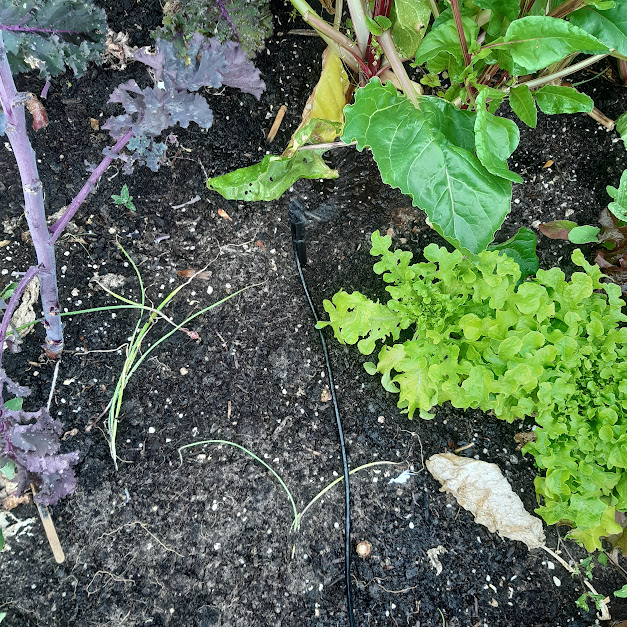
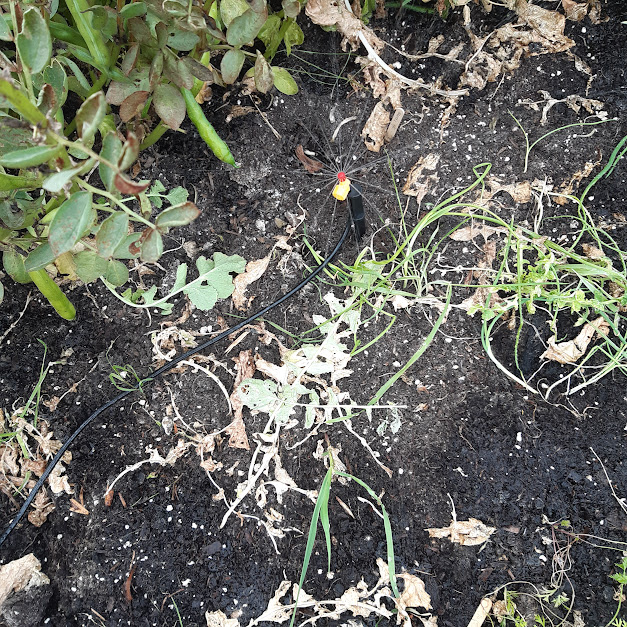
Tis the season for donating vegetables
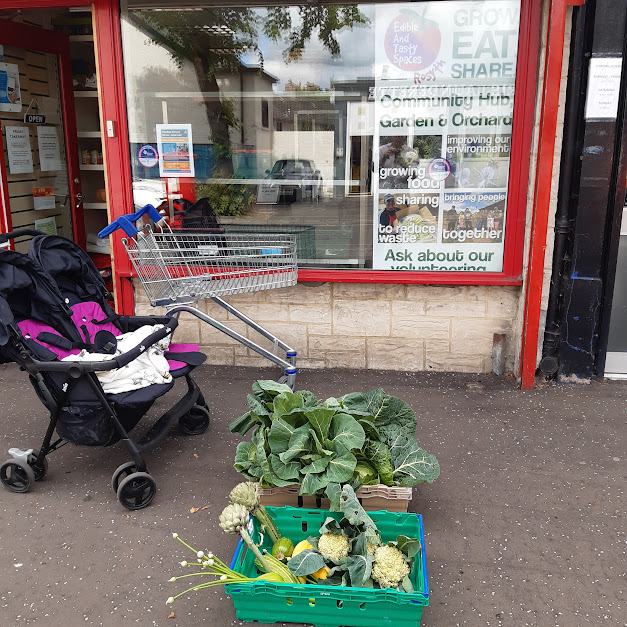
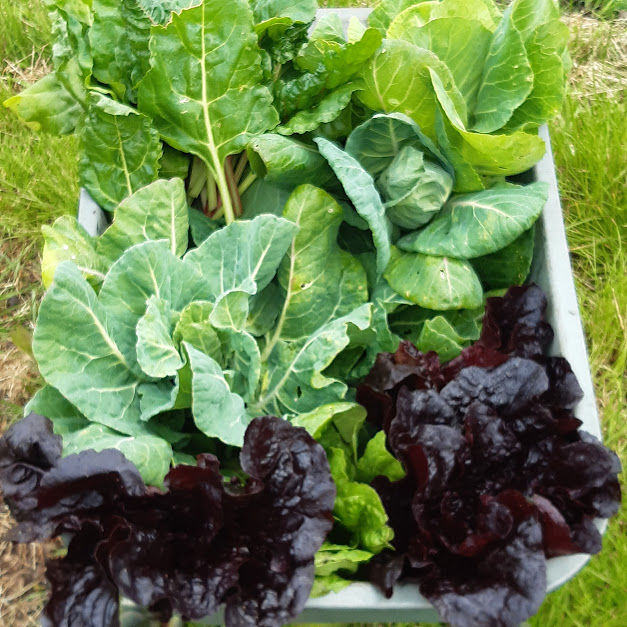
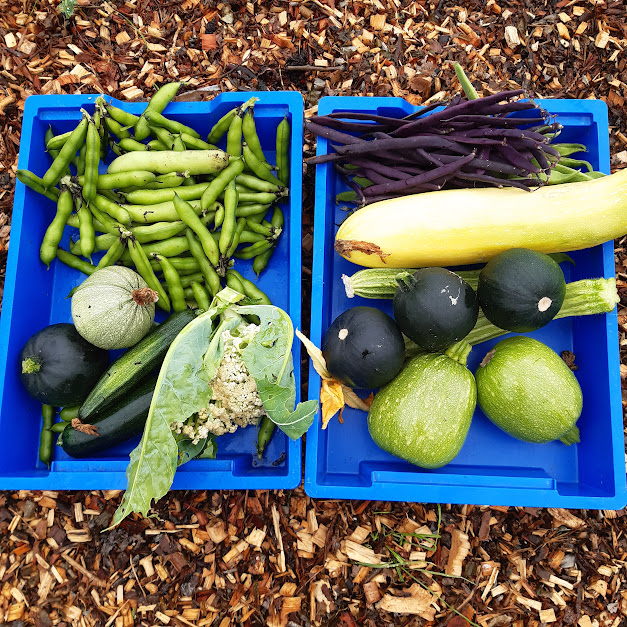


The season seems to trickle along and then suddenly it goes mad. It’s a joy to watch how quickly everything grows while living in flipflops, shorts and a hat.
The recent heat wave has had temps up to 30C/90-ish and it’s been murdering seedlings. It’s also meant afternoon siestas as it’s way too hot to work.
